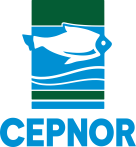Artigo 01
INFLUÊNCIA DA PROFUNDIDADE NA DISTRIBUIÇÃO DO CAMARÃO-ROSA, Farfantepenaeus subtilis (Pérez Farfante, 1967), NA REGIÃO NORTE DO BRASIL
| Boletim Técnico Científico - Volume 03 - Numero 1 |
| Resumo |
|---|
| O camarão-rosa, Farfantep enaeus subtilis (Pérez Farfante, 1967), é considerado a espécie de maior importância econômica para a pesca industrial na região Norte do Brasil. As pescarias atingiram o auge em 1987/1998, mas a partir destes anos a produção vem apresentando tendência de declínio provavelmente devido a sobrepesca e/ou fatores ambientais. Com o intuito de verificar a influência da profundidade na distribuição do camarão-rosa, foram coletados dados de pescarias realizadas com rede de arrasto demersal, com as mesmas características daquela utilizada pela frota comercial, durante cinco cruzeiros conduzidos no ano de 1996 pelo N.Pq. Almirante. Paulo Moreira. No total foram realizados 63 arrastos em profundidades de 35 a 639 m. O camarão-rosa apresentou ocorrência em 35% dos lances e foi capturado em profundidades de 35 a 102m. Foi evidenciada uma correlação positiva do peso médio individual com a profundidade, sendo os indivíduos de maior porte capturados em latitudes superiores a 02o N. Foi demonstrado que a CPUA e a CPUE foram estatisticamente iguais para toda área estudada. |
| Abstract |
|---|
| The pink-shrimp, Farfantepenaeus subtilis (Pérez Farfante, 1967), is considered a species of great economic importance in the industrial fisheries of Northern Brazil. The fisheries reached their heyday 1987/1998, but since then production has presented a tendency of decline, probably due to overfishing and/or environmental factors. Aiming to verify the influence of depth on the distribution of pink-shrimp, data of experimental fisheries were collected during five cruises carried out in the year 1996 by R.V. Almirante Paulo Moreira, with the aid of with a bottom trawlnet showing the same characteristics as the one used by the commercial boats. A total of 63 trawls were accomplished in depths from 35 to 639 meters. The occurrence of pink-shrimp was recorded in 35% of the hauls and catch was recorded in depths from 35 to 102 meters. A positive correlation of the average individual weight with depth was observed. The larger individuals are caught in latitudes higher than 02o N. It was demonstrated that CPUA and CPUE estimates were statistically similar on the whole studied area. |
| Palavras-Chave |
camarão-rosa, Farfantepenaeus subtilis, distribuição espacial, profundidade, região Norte |
